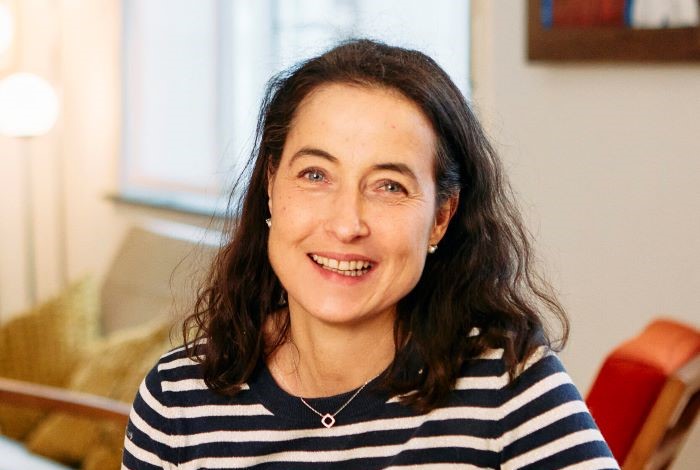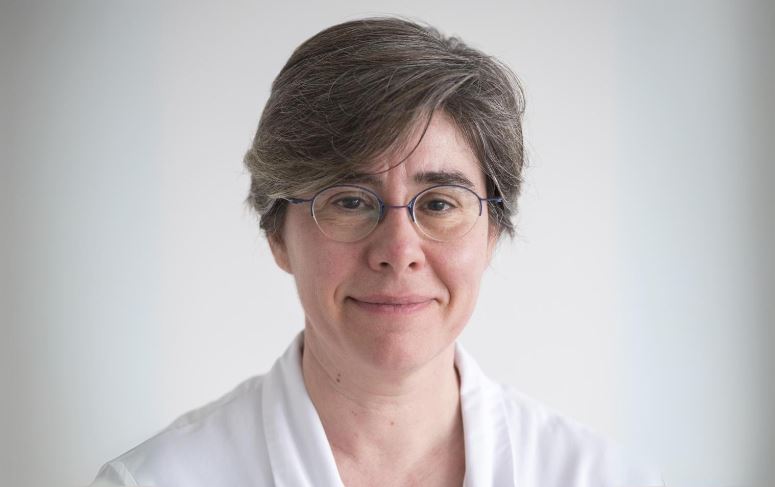
In Loving Memory of Florence Duvieusart
11 July 2024
Sarcomas are tumours of the bone or soft tissues of the body. Because they are so rare, a lot of healthcare providers fail to recognize the red flags. Prof. Dr. Gwen Sys (Ghent University Hospital) summarizes their main features for her fellow physicians.

Prof. Dr. Gwen Sys is an orthopedic oncology surgeon and coordinator of the Ghent University Hospital’s Cancer Centre. She specializes in sarcomas, so she is well positioned to talk more about this group of rare cancers.
Prof. Dr. Sys, very few people know about sarcomas. Can you briefly explain what a sarcoma is?
“A sarcoma is a malignant tumor that develops in connective tissue, such as muscles, fat, tendons or nerve tissue, for example, but cartilage and bone are also a form of connective tissue.”
“Sarcomas are extremely rare. We diagnose no more than 0.5 out of every 100,000 people per year with sarcomas developing in the bone. For soft tissue sarcomas, this is about 2.5 per 100,000 people. By comparison, a cancer is rare if it occurs in fewer than 6 per 100,000 people per year.”
This very low incidence probably explains why a lot of healthcare providers are also unfamiliar with sarcomas.
“Correct, together with some other factors. Bone sarcomas, for example, are most common in adolescents and teenagers and often occur in the knee. As a result, they are often mistaken for growing pains, and you get delayed diagnosis.”
‘Most doctors only ever see a malignant lipoma once in their career’
“Soft tissue sarcomas are also a common source of confusion. A soft tissue tumor can be benign or malignant. A well-known example is a lipoma. In 1 in 100 cases, it is malignant, but in the 99 other cases it is a benign fatty mass. So, it makes sense for physicians to think everything is ok. Most doctors only every see a malignant lipoma once in their career.”
How can doctors still recognize a sarcoma in time?
“There are some red flags to look out for as a physician. The Belgian Board of Oncology has also issued national clinical practice guidelines for general practitioners and specialists.”
“Signs pointing to soft tissue sarcomas include a growth located deep inside the tissue, a rapidly growing mass, unexplained bleeding or adhesion to surrounding structures. Signs that point to a bone sarcoma include pain that lasts longer than a few weeks, pain during the night, mechanical pain with no apparent explanation or swelling of the bone.”
“One key difference with growing pains is that you often see growing pains in multiple joints, whereas a malignant tumour usually only causes pain in just one location.”
Creating good clinical practice guidelines is one thing. You also have to get them down to the healthcare providers in the field, and that is not always easy. Are more campaigns needed to raise awareness about sarcomas?
“Awareness is valuable, but sarcomas are still very rare. Underdiagnosis is a problem, but so is overdiagnosis. It’s a matter of finding the right balance.”
“A general recommendation I would give to anyone involved in medical imaging is not to just have a tumor removed if you are not 100% sure what you are dealing with. Always first refer the patient to a multidisciplinary oncology consultation.”
‘If you don’t know exactly what you are dealing with, don’t just have a tumor removed but first refer the patient to a multidisciplinary oncology consultation’
“Here in Ghent, for example, we discuss twenty to thirty patients from outside our hospital every week. We see a lot of benign tumors as well, which saves several patients from undergoing unnecessary surgery.”
To conclude: will you be organizing activities to raise awareness about sarcomas at Ghent University Hospital in July?
“In fact, we have decided not to do anything special this year. We used to organize special events, but they didn’t really draw a crowd. Not even healthcare professionals showed up. This can be explained by the fact that it is such a rare form of cancer, so it is only relevant to a few people. Moreover, as an individual center, running such an event requires us to invest a lot of time and resources, whereas you can achieve a greater impact for many more patients by focusing on other topics.”
“I think having a national initiative would make much more sense. You could organize a single, large symposium about rare cancers for primary care providers, outlining two or three red flags for each type of tumor. These tumors are still very rare, but by combining the information you can make it relevant to healthcare providers.”

July is Sarcoma Awareness Month. That is why we at All.Can Belgium are sharing stories from patients and healthcare providers.
Sarcomas are often diagnosed late, in part because they are so rare. This can have a major impact on care: the longer the time to diagnosis, the more difficult the care journey often becomes for the patient.
With the #GetCheckedEarly campaign, we want to raise awareness of the importance of early detection and teach people to recognize the warning signs of three types of cancers: sarcoma, breast cancer and testicular cancer.
More info is available on the campaign site www.getcheckedearly.be.


Sarcoma patient Eva’s treatment process left much to be desired. The tumor was not identified as malignant until late in the diagnostic process, resulting in a lot of lost time. That's why Eva wants to share her story with others. "I hope other people can learn from it."